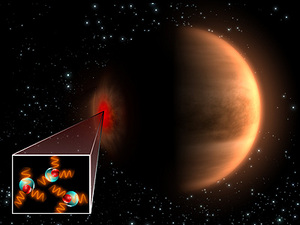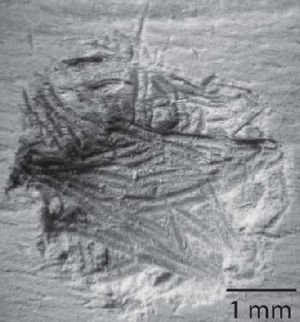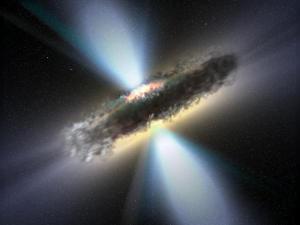Venus Express has detected the molecule hydroxyl on another planet for the first time. This detection gives scientists an important new tool to unlock the workings of Venus's dense atmosphere.
Hydroxyl, an important but difficult-to-detect molecule, is made up of a hydrogen and oxygen atom each. It has been found in the upper reaches of the Venusian atmosphere, some 100 km above the surface, by Venus Express's Visible and Infrared Thermal Imaging Spectrometer, VIRTIS.
The elusive molecule was detected by turning the spacecraft away from the planet and looking along the faintly visible layer of atmosphere surrounding the planet's disc. The instrument detected the hydroxyl molecules by measuring the amount of infrared light that they give off.

|
| ©ESA/C. Carreau
|
| Hydroxyl, an important but difficult-to-detect molecule, is made up of a hydrogen and oxygen atom each. It has been found in the upper reaches of the Venusian atmosphere, some 100 km above the surface, by Venus Express's Visible and Infrared Thermal Imaging Spectrometer, VIRTIS.
|


